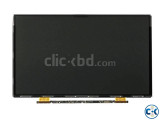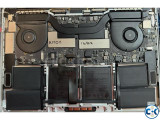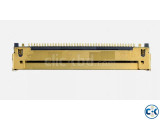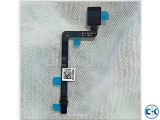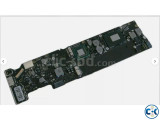Macbook Air no backlight troubleshooting
Meet in a safe & public place
DESCRIPTION for Macbook Air no backlight troubleshooting price in Bangladesh
|
When troubleshooting backlight circuit, the output voltage is important. Different voltages tell you different things.On an air, 39-49v means that the backlight boost circuit is working, but there is no load - aka, it doesn't "See" the light of the screen. Once there is a load on the circuit, like the light of the screen, the voltage will go down. This can be caused by bad LCD connector, bad LCD cable, LCD backlight cable being plugged in upside down(most common one), bad LED strip in the screen. When troubleshooting backlight circuit, the output voltage is important. Different voltages tell you different things. On an air, 39-49v means that the backlight boost circuit is working, but there is no load - aka, it doesn't "See" the light of the screen. Once there is a load on the circuit, like the light of the screen, the voltage will go down. This can be caused by bad LCD connector, bad LCD cable, LCD backlight cable being plugged in upside down(most common one), bad LED strip in the screen. 25-27v means backlight is working and we are just blind. 18-20v means that the boost circuit is partially working. This is usually missing BKL_PWM signal, or bad LED driver. BKL_PWM sets the brightness on the screen. If the LED driver is working but PWM is too low, there will be voltage boost, but it will be just below the threshold required to light the screen. Sometimes BKL_PWM is missing because the brightness down key is stuck down(liquid on keyboard), sometimes this is missing because the machine is fucked(you can just send pp3v3_s0 to the bkl_pwm line if it is missing to tell it to stay on at full brightness), sometimes the LED driver is shorting it to ground. If you have 8.5v on backlight, that means no boosting is occurring. This can be bad LED driver, this can be feedback line from backlight output to ball A5 of the LED driver for feedback being destroyed(VERY COMMON). Also BKL_EN voltage divider being bad - you need at least 2.7v on BKL_EN or you get no boosting and wind up with 8.5v on backlight, which is just PPBUS_G3H being passed through the circuit. If you have anything below 8.5v it could be a number of things. Here, if we have 0 volts, the first thing to determine is if we can actually see an IMAGE on the screen. If the computer does not detect the screen properly, and does not display an image, our issue is image/screen recognition, not backlight. The computer is smarter than an iPad, it won't send backlight out if the screen is fucked. So do you see a picture? If you do have 0v, it is often a short to ground on the line, or dead fuse, or blown via/trace somewhere in the boost circuit. See on the top of my picture where L9701 goes to D9701 which goes to output? If there is a break anywhere in that line, you get 0v on output, OR soemthing like 1.2v, or 0.125v, or some really low shit because the via is broken and making intermittent contact. Either way, in to start properly troubleshooting what is going on, we need way more information. I have also attached pictures of some common backlight faults. Again, don't make fun of me and microsoft paint, it's all I got it works for GradeAUnderA!! Md Nibir Apple Lab |












